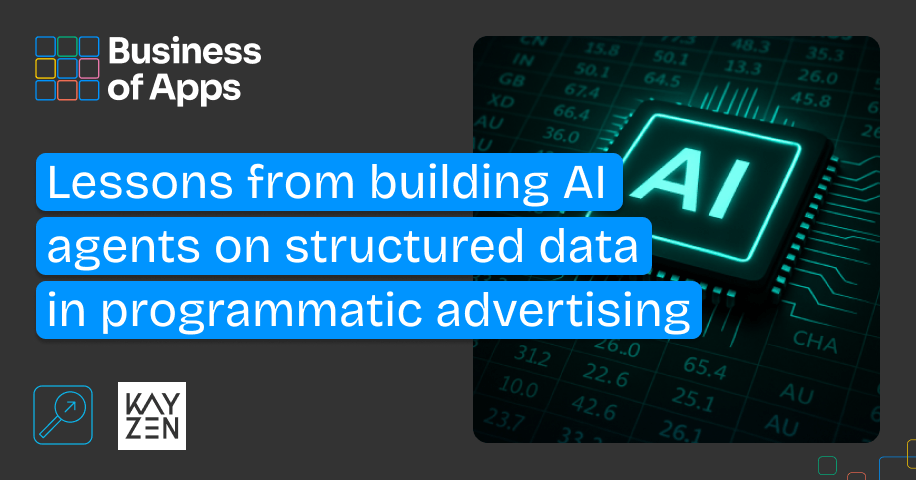This article is the first of a 2-part series on app-to-app Retargeting. It addresses WHY Retargeters should reconsider their vendor selection. The second article will address HOW and can be read here.
How long will the “ad tech tax” last in mobile marketing? To be fair, that’s maybe not the best way to ask that question. Rather, how will the “ad tech tax” change for mobile marketers in the coming couple years. Most Marketing Managers know that a considerable portion of their mobile media spend goes to ad tech vendors, but how much is still a black box. I doubt anybody would contend that ad tech providers do not deserve remuneration for their services – any company providing value in a supply chain should – but customers have a right to know so that they can make informed decisions about where and when to spend.
The push towards more efficient markets
There have been considerable shifts in the mobile in-app advertising supply chain over the past couple years. Broadly speaking, this has had two effects – both of which have helped drive market efficiencies in mobile advertising.
- More publishers and advertisers have moved towards programmatic channels, creating marketplaces where there are many buyers and sellers. When a publisher has more buyers for a given impression, the ACTUAL highest bidder is more likely to win. When advertisers have more impressions to bid on, they can better use AI/ML models to price a given impression more accurately and only bid when appropriate. This means they get more bang for their buck with their media spend.
- Using ad tech vendors that disclose their margins puts downward pressure on middlemen fees. So far, this has been more prevalent on the Supply side. There is an emerging class of ad tech vendors that operate on transparent SaaS fees (Nimbus, Bidmachine, Aequs) or remove them altogether (Amazon Transparent Ad Marketplace). Some major publishers like Zynga or MobileWare have even built their own exchanges. Again, middlemen fees aren’t fundamentally a bad thing, but buyers and sellers have a right to know so they can make informed decisions.
The result of these two forces means that the market has moved from something like this.

To something like this …

In the first scenario, only Advertiser 2 has access to all of the Supply. That likely required months or years of testing different vendors. In the second scenario, all Advertisers have access to all Supply, but there are still a lot of middlemen charging undisclosed fees.
We may still be away from the ideal in the classical economic sense, but the industry is getting better. In the long run, it’s not too hard to imagine a world more like this …

Why is Demand trailing Supply?
So why hasn’t the demand side caught up on the 2nd point the way Supply has? There are likely several reasons, but two that jump out are:
- A lack of opportunity, as the industry is still dominated by walled gardens and large advertising networks.
- New User Acquisition campaigns still rely on ad tech vendors who build clever algorithms that rely on pooling data across many different apps. While paradigm shifts like ATT and GDPR are eroding this capability, it is still fair to say that many vendors provide the key-success-factors in new User Acquisition. It may be hard to defend the lack of transparency, but high margins can be reasonably justified.
This is not true of all mobile advertising cases though. One area that is ripe for improving efficiency is Retargeting. Retargeting vendors typically charge more than UA vendors despite providing less value. Their margins are often 50% and sometimes as much as 70%. The truth is that a sophisticated mobile advertiser can run a successful Retargeting campaign with their first party data and a platform that allows them to bid on programmatic channels.
The first thing to keep in mind is that Retargeting campaigns do not rely on pooling data across apps. Mobile User Acquisition, especially in the gaming vertical, has historically relied upon vendors who do this to cherry pick the highest paying users. The term whale hunting, where a single high-paying user subsidizes hundreds or thousands of non-paying users, is a commonly known term amongst the mobile UA community. The ability to find new paying users is highly reliant on data from other apps. As a mobile advertiser, the most effective way to access such data is through a vendor with data from many different apps.
Retargeting, however, relies on identifying your best users and incentivizing them to come back to your app. Segmenting users appropriately and targeting them with good creatives are much more important. Most advertisers have the data and teams needed to do this themselves. This begs the question then, why work with a vendor who keeps 50% of your campaign budget as a margin for themselves and won’t share their real pricing with you?
A very good question indeed.
The challenge is finding a platform that gives you the control to put your first-party data to use and the transparency to actually disclose what they charge. This is where Kayzen comes in. Transparency and control are part of our life blood, and Retargeting is the lowest-hanging fruit in the advertisers pursuit of efficient markets. We have upfront SaaS fees that are much lower as a percentage of media spend than other Retargeting vendors. Our platform easily integrates with your first-party in-app data (via API or through your MMP) and has the Supply connections needed to find your existing users. Finally, we have a team of experienced specialists here to share the best practices that we have honed over the years. Given the 6 and 7-figure monthly budgets that many advertisers spend on Retargeting, trying it with Kayzen seems like a no-brainer.
So there is the reason WHY advertisers should look at Retargeting as an easy way to gain efficiency in their media spend. In my next article, I’ll examine the HOW.



